Westernization
Westernization (US) or Westernisation (UK), also Europeanization/Europeanisation or occidentalization/occidentalisation (from the Occident), is a process whereby societies come under or adopt Western culture in areas such as industry, technology, politics, economics, lifestyle, law, norms, mores, customs, traditions, values, mentality, perceptions, diet, clothing, language, alphabet, religion, and philosophy. During colonialism it often involved spread of Christianity.[1]
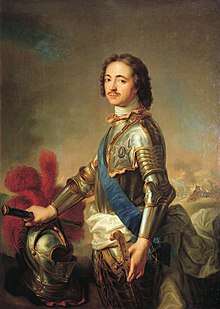
Westernization has been a growing influence across the world in the last few centuries, with some thinkers assuming Westernization to be the equivalent of modernization,[2] a way of thought that is often debated. The overall process of Westernization is often two-sided in that Western influences and interests themselves are joined with parts of the affected society, at minimum, to change towards a more Westernized society, with the putative goal of attaining a Western life or some aspects of it, while Western societies are themselves affected by this process and interaction with non-Western groups.
Westernization traces its roots back to Ancient Greece. Later, the Roman Empire would take on the first process of Westernization as it was heavily influenced by Greece and created a new culture based on the principles and values of the Ancient Greek society. The Romans emerged with a culture that would lay the new foundations of Europe and grow into a new Western identity based on the Greco-Roman society.
Westernization can also be compared to acculturation and enculturation. Acculturation is "the process of cultural and psychological change that takes place as a result of contact between cultural groups and their individual members."[3] After contact, changes in cultural patterns are evident within one or both cultures. Specific to Westernization and the non-Western culture, foreign societies tend to adopt changes in their own social systems relative to Western ideology, lifestyle, and physical appearance, along with numerous other aspects, and shifts in culture patterns can be seen to take root as a community becomes acculturated to Western customs and characteristics – in other words, Westernized. Westernization can include Christianization, Americanization and Europeanization, with historical versions including Romanization, Hellenization, Francization, Russification and Germanization.
The phenomenon of Westernization does not follow any one specific pattern across societies as the degree of adaption and fusion with Western customs will occur at varying magnitudes within different communities.[4] Specifically, the extent to which domination, destruction, resistance, survival, adaptation or modification affect a native culture may differ following inter-ethnic contact.[5]
Definition
Countries part of the West
The "West" was originally defined as the Western world. Ancient Romans distinguished between Oriental (Eastern, or Asian) cultures like Ancient Egypt that lived in the West. A thousand years later, the East-West Schism separated the Catholic Church and Eastern Orthodox Church from each other. The definition of Western changed as the West was influenced by and spread to other nations. Islamic and Byzantine scholars added to the Western canon when their stores of Greek and Roman literature jump-started the Renaissance. Although Russia converted to Christianity in the 10th century, the West expanded to include it fully when Peter the Great deeply reformed the country's government, the church and modernized the society thanks to the ideas brought from the Netherlands.[6] Today, most modern uses of the term refer to the societies in the West and their close genealogical, linguistic, and philosophical descendants, typically included are those countries whose ethnic identity and dominant culture are derived from European culture. However, though sharing in a similar historical background, it would be incorrect to regard the Western world as a monolithic bloc, as many cultural, linguistic, religious, political, and economical differences exist between Western countries and populations.
Western civilization is commonly said to include: Australia, Canada, New Zealand, the United Kingdom, the United States, all European member countries of the EU, EFTA, and European microstates.[7][8]
Countries significantly influenced by Westernization
The process of Westernization comes when non-Western societies come under Western influence or adopt Western culture in different areas such as industry, technology, law, politics, economics, lifestyle, diet, clothing, language, alphabet, religion, philosophy, and values.[9]
The following countries or regions experienced a significant influence by the process of Westernization:
.svg.png)







.svg.png)
.svg.png)




- Latin America.[21] Most countries in Latin America are considered Western countries, largely because most of its peoples are descended from Europeans (Spanish and Portuguese settlers and later immigration from other European nations), and their society operates in a highly Westernized way. Indeed, most countries in Latin America use their official language, either in Spanish or Portuguese. According to the CIA World Factbook, there has also been considerable immigration to Latin America, particularly to Argentina, Brazil, Chile, and Uruguay, from European nations other than Spain and Portugal (for example, from Germany, Italy, the Netherlands, etc.—see Immigration to Argentina, Immigration to Brazil, Immigration to Chile, and Immigration to Uruguay). However, relations between Western countries and Latin America are quite weak.






Widening the definition of countries influenced by Westernization may cause controversies.
Different views
Kishore Mahbubani and Westernization
Kishore Mahbubani's book entitled The Great Convergence: Asia, the West, and the Logic of One World (Public Affairs), is very optimistic. It proposes that a new global civilization is being created. The majority of non-Western countries admire and adhere to Western living standards. However, he warns us that this newly emerging global order has to be ruled through new policies and attitudes. He argues that the policymakers all over the world must change their preconceptions and accept that we live in one world. The national interests must be balanced with global interests and the power must be shared. Mahbubani urges that only through these actions can we create a world that converges benignly.
He states there is conflict between "the West and the Rest." and offers three forms of general action that non-Western civilizations can react toward Western countries.[28]
- Non-Western countries can attempt to achieve isolation in order to preserve their own values and protect themselves from Western invasion. However, Huntington argues that the costs of this action is high and only a few states can pursue it.
- According to the theory of "band-wagoning" non-Western countries can join and accept Western values.
- Non-Western countries can make an effort to balance Western power through modernization. They can develop economic, military power and cooperate with other non-Western countries against the West while still preserving their own values and institutions.
The End of Westernization
Mahbubani counters this argument in his other book, The New Asian Hemisphere: The Irresistible Shift of Global Power to the East. This time, he argues that Western influence is now "unraveling", with Eastern powers such as China arising. He states:
…the 5.6 billion people who live outside the West no longer believe in the innate or inherent superiority of Western civilization. Instead, many are beginning to question whether the West remains the most civilized part of the world. What we are witnessing today…is the progressive unwrapping of these many layers of Western influences.[29]
He goes on further to explain the decline of Western influence, stating reasons as to the loss of Western credibility with the rest of the world.
- There is an increasing perception that Western countries will prioritize their domestic problems over international issues, despite their spoken and written promises of having global interests and needs.
- The West has become increasingly biased and close-minded in their perception of "non-Western" countries such as China, declaring it an "un-free" country for not following a democratic form of government.
- The West uses a double standard when dealing with international issues.
- As the biggest Eastern populations gain more power, they are moving away from the Western influences they sought after in the past. The "anti-Americanism" sentiment is not temporary, as Westerners would like to believe – the change in the Eastern mindset has become far too significant for it to change back.
Samuel P. Huntington and Westernization
In contrast to territorial delineation, others, like the American political scientist Samuel P. Huntington (see The Clash of Civilizations), consider what is "Western" based on religious affiliation, such as deeming the majority-Western Christian part of Europe and North America the West, and creating 6 other civilizations, including Latin America, Confucian, Japanese, Islamic, Hindu and Slavic-Orthodox, to organize the rest of the globe.[30]
Furthermore, Huntington claims that after the end of the cold war, world politics had been moved into a new aspect in which non- Western civilizations were no more the exploited recipients of Western civilization but become another important actor joining the West to shape and move the world history.[31]
Huntington believed that while the age of ideology had ended, the world had only reverted to a normal state of affairs characterized by cultural conflict. In his thesis, he argued that the primary axis of conflict in the future will be along cultural and religious lines.[32]
Edward Said and Westernization
In Orientalism Edward Said views Westernization as it occurred in the process of colonization, an exercise of essentializing a "subject race" in order to more effectively dominate them. Said references Arthur Balfour, the British Prime Minister from 1902–1905, who regarded the rise of nationalism in Egypt in the late 19th century as counterproductive to a "benevolent" system of occupational rule. Balfour frames his argument in favor of continued rule over the Egyptian people by appealing to England's great "understanding" of Egypt's civilization and purporting that England's cultural strengths complemented and made them natural superiors to Egypt's racial deficiencies. Regarding this claim, Said says, "Knowledge to Balfour means surveying a civilization from its origins to its prime to its decline – and of course, it means being able to...The object of such knowledge is inherently vulnerable to scrutiny; this object is a ‘fact' which, if it develops, changes, or otherwise transforms itself...[the civilization] nevertheless is fundamentally, even ontologically stable. To have such knowledge of such a thing is to dominate it." The act of claiming coherent knowledge of a society in effect objectifies and others it into marginalization, making people who are classified into that race as "almost everywhere nearly the same." Said also argues that this relationship to the "inferior" races, in fact, works to also fortify and make coherent what is meant by "the West"; if "The Oriental is irrational, depraved (fallen), childlike, "different..." then "...the European is rational, virtuous, mature, normal." Thus, "the West" acts as a construction in the similar way as does "the Orient" – it is a created notion to justify a particular set of power relations, in this case the colonization and rule of a foreign country.
Process of Westernization
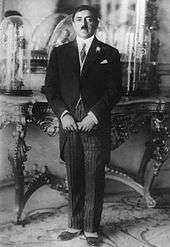
Colonization (1400s–1970s)
Europeanization
From 1400s onward, Europeanization and colonialism spread gradually over much of the world and controlled different regions during this five centuries long period, colonizing or subjecting the majority of the globe. Following World War II, Western leaders and academics sought to expand innate liberties and international equality. A period of decolonization began. At the end of the 1960s, most colonies were allowed autonomy. Those new states often adopted some aspects of Western politics such as a constitution, while frequently reacting against Western culture.
Westernization in Asia
General reactions to Westernization can include fundamentalism, protectionism or embrace to varying degrees. Countries such as Korea and China attempted to adopt a system of isolationism but have ultimately juxtaposed parts of Western culture into their own, often adding original and unique social influences, as exemplified by the introduction of over 1,300 locations of the traditionally Western fast-food chain McDonald's into China.[33] Specific to Taiwan, the industry of bridal photography (see Photography in Taiwan) has been significantly influenced by the Western idea of "love". As examined by author Bonnie Adrian, Taiwanese bridal photos of today provide a striking contrast to past accepted norms, contemporary couples often displaying great physical affection and, at times, placed in typically Western settings to augment the modernity, in comparison to the historically prominent relationship, often stoic and distant, exhibited between bride and groom.[34] Though Western concepts may have initially played a role in creating this cultural shift in Taiwan, the market and desire for bridal photography has not continued without adjustments and social modifications to this Western notion.
In Korea, the first contact with Westernization was during the Chosun Dynasty, in 17th century. Every year, the emperor would dispatch few envoy ambassadors to China and while they were staying in Beijing, the Western missionaries were there. Through the missionaries, Korean ambassadors were able to adopt the Western technology and culture. In 19th century, Korea started to send ambassadors to the foreign countries, other than Japan and China. While Korea was being Westernized slowly in late 19th century, Korea had the idea of "Eastern ways and Western frames (東道西器)", meaning that they would accept the Western "bowl", but use it with Eastern principles inside.
In Japan, the Netherlands continued to play a key role in transmitting Western know-how to the Japanese from the 17th century to the mid-19th century, as the Japanese had opened their doors only to Dutch merchants before US Navy Commodore Matthew Perry's visit in 1852. After Commodore Perry's visit, Japan began to deliberately accept Western culture to the point of hiring Westerners to teach Western customs and traditions to the Japanese starting in the Meiji era. Many Japanese politicians have since also encouraged the Westernization of Japan using the term Datsu-A Ron, which means the argument for "leaving Asia" or "Good-bye Asia". In Datsu-A Ron, "Westernization" was described as an "unavoidable" but "fruitful" change. After Japan's surrender to the United States and its allies ended World War II, the Westernization process of Japanese culture was further intensified and today, Japan is notably among the most Westernized countries in Asia. However, in contrast, despite many advances in industrial efficiency, Japan has managed to sustain a culture of strict social hierarchy and limited individualization.[35]
In Iran, the process of Westernization dates back to the country's attempt to westernize during the beginning in the 1930s, which was dictated by Shah Rezā Khan and continued by his son during the Cold War and agitated the largely conservative Shia Muslim masses of the country, was partly responsible for the 1979 Iranian Revolution.
In Turkey, the process of Westernization dates back to the 19th century, known as the Tanzimat (reorganization) period. The Ottoman Empire began to change itself according to western science, practice and culture. The Empire took some innovations from the West. Also, by the contribution of foreign engineers the Empire repaired its old arm systems. Newly-found schools, permanent ambassadors, and privy councils were essential improvement for the Empire. All these reformations had good impact at the point of collapse. Also, the innovation brought from European countries shaped the Empire as a nation run along modern lines. The Westernization efforts continued under the leadership of Mustafa Kemal Atatürk, with the adaptation of the Latin-script alphabet and the French concept of secularism. As a result, Turkey is one of the most Westernized majority-Muslim nations.
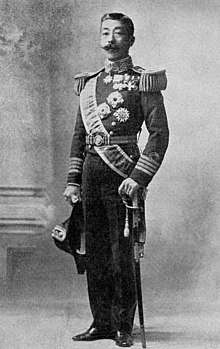 An example of Westernization: Meiji period, Japan, Prince Yorihito Higashifushimi in typical Western naval dress uniform with white gloves, epaulettes, medals and hat.
An example of Westernization: Meiji period, Japan, Prince Yorihito Higashifushimi in typical Western naval dress uniform with white gloves, epaulettes, medals and hat.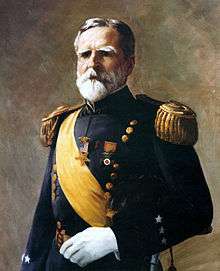 Similarity with U.S. General John C. Bates's uniform.
Similarity with U.S. General John C. Bates's uniform.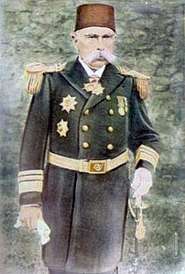 Another example of Westernization: Adil Pasha, an admiral in the Imperial Ottoman Navy in typical Western naval dress uniform.
Another example of Westernization: Adil Pasha, an admiral in the Imperial Ottoman Navy in typical Western naval dress uniform.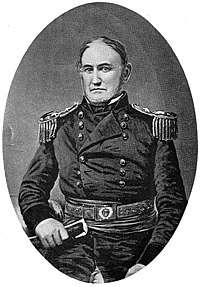 Similarity with David E. Twiggs's uniform.
Similarity with David E. Twiggs's uniform.
Globalization (1970s–present)
Westernization is often regarded as a part of the ongoing process of globalization. This theory proposes that Western thought has led to globalisation, and that globalisation propagates Western culture, leading to a cycle of Westernization. On top of largely Western government systems such as democracy and constitution, many Western technologies and customs like music, clothing and cars have been introduced across various parts of the world and copied and created in traditionally non-Western countries.
However, Westernization has been also reversed in some countries following wars or changes in regime, for example: China excluding Taiwan after 1949, South Vietnam after Communist takeover in 1975, Afghanistan after the Soviet invasion and Iran after the 1979 revolution.
The main characteristics are economic and political (free trade) democratisation, combined with the spread of an individualised culture. Often it was regarded as opposite to the worldwide influence of Communism. After the break-up of the USSR in late 1991 and the end of the Cold War, many of its component states and allies nevertheless underwent Westernization, including privatization of hitherto state-controlled industry.
With debates still going on, the question of whether globalization can be characterized as Westernization can be seen in various aspects. Globalization is happening in various aspects, ranging from economics, politics and even to food or culture. Westernization, to some schools, is seen as a form of globalization that leads the world to be similar with Western powers. Being globalized means taking positive aspects of the world, but globalization also brings about the debate about being Westernized. Democracy, fast foods, and American pop-culture can all be examples that are considered as Westernization of the world.
According to the "Theory of the Globe scrambled by Social network: a new Sphere of Influence 2.0", published by Jura Gentium (the University of Florence), an increasing role in Westernisation is ruled by Social Media. The comparison with Eastern realities, who decided to ban the American Social Medias (as Iran and China with Facebook, Twitter), marks a political desire to avoid the process of Westernisation of own population and way to communicate.[36]
Consequences
Due to the colonization of the Americas and Oceania by Europeans, the cultural, ethnic and linguistic make-up of the Americas and Oceania has been changed. This is most visible in former settler colonies such as: Australia, Canada, New Zealand, and the United States, and even, to a lesser extent, some Latin American countries: Argentina, Chile, Costa Rica, Panama, and Uruguay, where the traditional indigenous population has been predominantly replaced demographically by non-indigenous settlers due to transmitted disease and conflict. This demographic takeover in settler countries has often resulted in the linguistic, social, and cultural marginalisation of indigenous people. However, even in countries where large populations of indigenous people remain or the indigenous peoples have mixed (mestizo) considerably with European settlers, such as: Mexico, Peru, Suriname, Ecuador, Bolivia, Brasil, Venezuela, Belize, Paraguay, South Africa, Colombia, Guatemala, Haiti, Honduras, Guyana, El Salvador, Jamaica, Cuba, or Nicaragua, relative marginalisation still exists.
Due to colonization and European immigration, the prevalent native languages in the Americas, Australia, New Zealand, Northern Asia and part of South Africa and Central Asia, are now usually European languages or creoles based on them:
- English (Australia, New Zealand, United States, and Canada without mainly French-speaking Quebec); English along with English-based creole languages (Anglophone Africa, Antigua and Barbuda, Bahamas, Barbados, Dominica, Federated States of Micronesia, Fiji, Grenada, Guyana, Hong Kong, India, Jamaica, Kiribati, Marshall Islands, Nauru, Palau, Papua New Guinea, the Philippines, Saint Kitts and Nevis, Saint Lucia, Saint Vincent and the Grenadines, Samoa, Singapore, Solomon Islands, Tonga, Tuvalu, and Trinidad and Tobago).
- French (Quebec, New Brunswick and parts of Ontario in Canada and Saint Pierre and Miquelon); French along with French-based creole languages (Francophone Africa, French Guiana, Guadeloupe, Haiti, Vanuatu, Martinique, and Saint-Barthelemy).
- Spanish (Hispanic America, Equatorial Guinea, Western Sahara, and the Philippines).
- Portuguese (Brazil, Uruguay, Lusophone Africa, East Timor, Macau, Goa, and other members of the Community of Portuguese Language Countries).
- Russian – (Northern Asia and parts of Central Asia).
- Dutch along with Creole languages (Suriname, Aruba and the Netherlands Antilles).
- Afrikaans along with English (parts of South Africa and Namibia).
- German along with Creole languages (along with Afrikaans in Namibia and some areas in the US, such as Pennsylvania (Pennsylvania Dutch))
Many indigenous languages are on the verge of becoming extinct. However, some settler countries have gone to lengths to preserve indigenous languages; for example, in New Zealand the Māori language is one of three official languages, the others being English and New Zealand sign language.
See also
- Acculturation
- Anti-globalisation
- Colonial mentality
- Colonialism
- Colonisation
- Cultural assimilation
- Cultural diversity
- Cultural imperialism
- The Culture of Nakedness and the Nakedness of Culture
- Democratisation
- Global citizenship
- Globalisation
- Indigenization
- McDonaldization
- Melting pot
- Modern culture
- Modernization
- Multiculturalism
- Pop culture
- Westernizers – Tsarist Russian advocates of westernization
References
- Thong, Tezenlo. "‘To Raise the Savage to a Higher Level:' The Westernization of Nagas and Their Culture," Modern Asian Studies 46, no. 4 (July 2012): 893–918
- Hayford, Charles. "Westernization". in David Pong, ed., Encyclopedia of Modern China. Charles Scribner's Sons. Missing or empty
|url=(help) - "Acculturation". Encyclopedia of Applied Psychology. Oxford: Elsevier Science & Technology. Missing or empty
|url=(help) - McLeish, Kenneth. "Westernization". Bloomsbury Guide to Human Thought. Bloomsbury, London. Missing or empty
|url=(help) - Kottak, Conrad Phillip. (2005). Window on Humanity. New York: McGraw-Hill
- "The Westernization of Russia and the Intelligentsia". econc10.bu.edu.
- Questions about immigrant-related statistics. "Key figures Immigration and immigrants – SSB". Ssb.no. Retrieved 15 December 2015.
- Innvandrere og norskfødte med innvandrerforeldre, 1. januar 2015 Statistics Norway (in Norwegian) retrieved 15 December 2015
- Thong, Tezenlo. "‘To Raise the Savage to a Higher Level:' The Westernization of Nagas and Their Culture," Modern Asian Studies 46, no. 4 (July 2012): 893–918
- https://www.theatlantic.com/photo/2013/07/afghanistan-in-the-1950s-and-60s/100544/
- https://www.jadaliyya.com/Details/29728
- https://www.thebusinessyear.com/whats-behind-azerbaijans-shirt-to-the-west/focus
- http://www.afrol.com/articles/18640
- https://www.businessinsider.com/iran-before-the-revolution-in-photos-2015-4?IR=T
- https://www.washingtonpost.com/posteverything/wp/2014/09/15/i-despised-saddams-police-state-but-the-islamic-state-would-not-exist-under-his-rule/
- Richard T. Arndt, David Lee Rubin (1996). The Fulbright difference. Studies on cultural diplomacy and the Fulbright experience. Transaction Publishers. p. 53. ISBN 9781560008613. Retrieved 2010-05-26.
- Sheldon Kirshner (2013-10-16). "Is Israel Really a Western Nation?". Sheldon Kirshner Journal. Retrieved 2013-11-09.
- https://www.japanvisitor.com/japanese-culture/history/westernization
- https://www.selectiveasia.com/blog/south-korea/4-ways-western-culture-has-influenced-south-korea
- https://www.ijtra.com/special-issue-abstract.php?id=westernization-as-cultural-phenomenon
- "CIA – The World Factbook – Field Listing – Ethnic groups". Retrieved 2008-02-20.
- Cooke, Rachel (2006-11-22). "Paris of the east? More like Athens on speed". The Guardian. London.
- "Lebanon withdraws from Eurovision". BBC News Online. 2005-03-18. Retrieved 2006-07-15.
- Heydarian, Richard (2015-01-12). "Philippines' Shallow Capitalism: Westernization Without Prosperity". The Huffington Post. Retrieved 19 November 2016.
- https://www.tandfonline.com/doi/abs/10.1179/0590887613Z.00000000025
- Cagaptay, Soner (2014). The Rise of Turkey: The Twenty-First Century's First Muslim Power. Potomac Books. p. 44. ISBN 9781612346519.
- https://allthatsinteresting.com/1960s-egypt
- Hungtington SP, "The Clash of Civilizations?" In: Lechner FJ, Boli J, editors. The Globalization Reader. 4th ed. West Sussex: Wiley-Blackwell; 2012. 37–44
- Mahbubani, Kishore (April 28, 2009). The New Asian Hemisphere: The Irresistible Shift of Global Power to the East (Reprint ed.). New York: PublicAffairs. pp. 129–30. ISBN 978-1586486716.
- Graham, James. "Samuel P. Huntington's Clash of Civilizations". History Orb. Retrieved 12 April 2013.
- Murden S. Cultures in world affairs. In: Baylis J, Smith S, Owens P, editors. The Globalization of World Politics. 5th ed. New York: Oxford University Press; 2011. pp. 416–26.
- mehbaliyev (30 October 2010). "Civilizations, their nature and clash possibilities (c) Rashad Mehbal…".
- Polis, Carey (2011-07-29). "McDonald's China Plans To Open A New Store Every Day In Four Years". Huffington Post. Retrieved 12 April 2013.
- Adrian, Bonnie (2003). Framing the Bride: Globalizing Beauty and Romance in Taiwan's Bridal Industry. Los Angeles, CA: University of California Press.
- Dore 1984, Unity and Diversity in World Culture in Bull & Watson eds. Expansion of International society, OUP, p 416
- Peccia, T., 2014, "The Theory of the Globe Scrambled by Social Networks: A New Sphere of Influence 2.0", Jura Gentium – Rivista di Filosofia del Diritto Internazionale e della Politica Globale, Sezione "L'Afghanistan Contemporaneo".
- Gunewardene, Huon, and Zheng (2001). "Exposure to Westernization and Dieting: A Cross-Cultural Study". Int. J. Eat. Disord., 29: pp. 289–93.
- Khondker (2004). "Glocalization as Globalization: Evolution of a Sociological Concept". Bangladesh e-Journal of Sociology. Volume 1. Number 2. pp. 12–20.
- Baek (2004). The Main Concept of Philosophy of Korea. Volume 1. pp. 24–28.
Further reading
- The Idea of the West (2004), written by Alastair Bonnett (Palgrave)
- The Decline of the West (1918), written by Oswald Spengler.
- The End of History and the Last Man (1992), written by Francis Fukuyama.
- The Clash of Civilizations (1996), written by Samuel P. Huntington.
- The Triumph of the West (1985) written by Oxford University historian J.M. Roberts.
- Ankerl, Guy (2000). Global communication without universal civilization. INU societal research. Vol. 1: Coexisting contemporary civilizations: Arabo-Muslim, Bharati, Chinese, and Western. Geneva: INU Press. ISBN 978-2-88155-004-1.